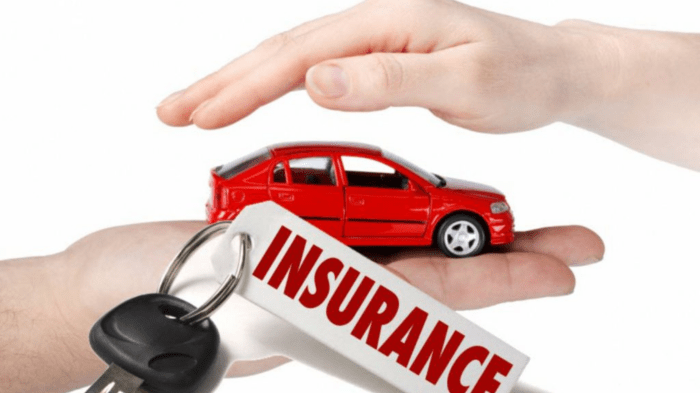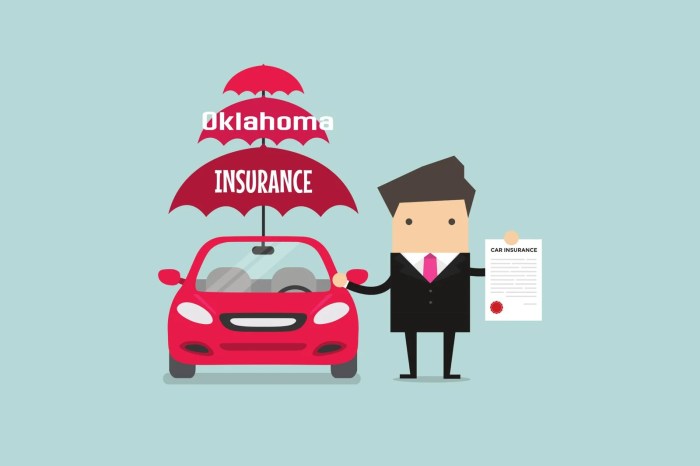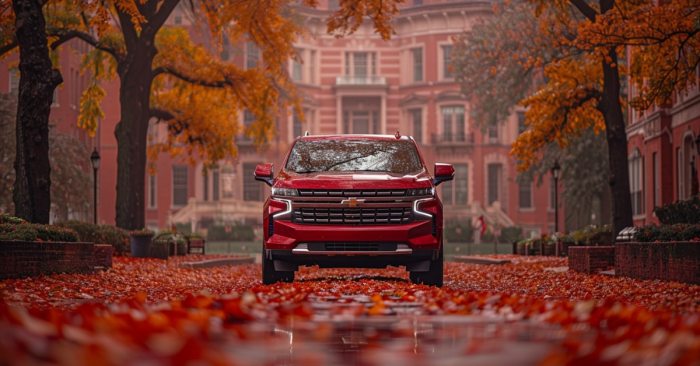Securing the right car insurance in Oklahoma is crucial for protecting yourself financially in the event of an accident. Oklahoma’s insurance laws mandate specific minimum coverage levels, but understanding the nuances of different policy types, factors influencing premiums, and the claims process can be complex. This guide unravels the intricacies of Oklahoma car insurance, empowering you to make informed decisions and secure adequate protection.
From exploring the mandatory liability coverage to delving into optional add-ons like collision and comprehensive insurance, we’ll examine how factors like age, driving history, vehicle type, and location influence your premium. We’ll also provide a practical, step-by-step approach to obtaining quotes, comparing providers, and navigating the claims process, ensuring you’re well-prepared for whatever the road may bring.
Understanding Oklahoma’s Car Insurance Laws

Driving in Oklahoma requires understanding the state’s car insurance regulations to ensure you’re legally protected and compliant. Failure to carry the minimum required insurance can lead to significant penalties, including fines and license suspension. This section clarifies Oklahoma’s insurance requirements and provides insights into various coverage options.
Minimum Car Insurance Requirements in Oklahoma
Oklahoma mandates a minimum level of liability insurance coverage for all drivers. This minimum coverage includes $25,000 bodily injury liability for one person injured in an accident, $50,000 bodily injury liability for all people injured in a single accident, and $25,000 property damage liability. This means if you cause an accident resulting in injuries or property damage, your insurance will cover up to these amounts. It’s crucial to remember that this is the minimum; higher coverage limits are strongly recommended to protect yourself financially in the event of a serious accident.
Types of Car Insurance Coverage Available in Oklahoma
Several types of car insurance coverage are available in Oklahoma, each offering different levels of protection.
Liability Insurance: This covers injuries or damages you cause to others in an accident. As mentioned, Oklahoma requires minimum liability coverage.
Collision Insurance: This covers damage to your vehicle, regardless of fault, in an accident. This is optional but highly recommended.
Comprehensive Insurance: This covers damage to your vehicle from events other than accidents, such as theft, vandalism, fire, or hail. This is also optional.
Uninsured/Underinsured Motorist Coverage: This protects you if you’re involved in an accident with an uninsured or underinsured driver. This coverage is essential given the potential for accidents involving drivers without sufficient insurance.
Medical Payments Coverage: This covers medical expenses for you and your passengers, regardless of fault. It’s a valuable addition to your policy.
Personal Injury Protection (PIP): PIP coverage pays for your medical bills and lost wages, regardless of fault. Oklahoma does not mandate PIP coverage.
Comparison of Insurance Coverage Options Based on Driver Profiles
Insurance premiums vary significantly based on individual driver profiles. Younger drivers, those with poor driving records (accidents, tickets), and those living in high-risk areas generally pay higher premiums. For example, a young driver with multiple speeding tickets will likely face significantly higher premiums compared to an older driver with a clean driving record. Similarly, drivers residing in urban areas with higher accident rates might pay more than those in rural areas. Insurance companies use sophisticated algorithms considering numerous factors to assess risk and determine premiums.
Average Cost of Different Coverage Levels in Oklahoma
The average cost of car insurance in Oklahoma can vary greatly. The following table provides estimated average annual costs. These are estimates and actual costs will vary based on individual circumstances.
| Coverage Level | Liability Only (25/50/25) | Liability + Collision | Full Coverage (Liability + Collision + Comprehensive) |
|---|---|---|---|
| Average Annual Cost | $500 – $700 | $800 – $1200 | $1000 – $1500 |
Factors Affecting Car Insurance Premiums in Oklahoma

Several key factors influence the cost of car insurance in Oklahoma. Insurance companies utilize a complex formula, considering a variety of elements to assess risk and determine your premium. Understanding these factors can help you make informed decisions to potentially lower your costs.
Credit Score’s Influence on Premiums
Your credit score plays a significant role in determining your car insurance premium in Oklahoma. Insurers often believe that individuals with good credit are less likely to file claims, resulting in lower risk for the company. A higher credit score generally translates to lower premiums, while a lower score can lead to significantly higher rates. For example, someone with a credit score above 750 might qualify for substantial discounts, whereas someone with a score below 600 could face much higher premiums. This practice is legal in Oklahoma, although the exact weight given to credit scores varies between insurance providers.
Driving Record and its Impact
Your driving history is a major factor in calculating your insurance premium. A clean driving record, free of accidents and traffic violations, typically results in lower premiums. Conversely, accidents, especially those resulting in significant damage or injuries, will significantly increase your rates. Similarly, speeding tickets, DUIs, and other moving violations will also elevate your premiums. The severity and frequency of incidents directly impact the increase. For instance, a single speeding ticket might result in a modest increase, while a DUI conviction could lead to a substantial premium hike, potentially doubling or tripling your rates.
Vehicle Type and Insurance Costs
The type of vehicle you drive heavily influences your insurance premium. Generally, newer, more expensive cars are more costly to insure due to higher repair costs and potential for greater losses. High-performance vehicles often attract higher premiums because of their increased risk of accidents and higher repair bills. Conversely, older, less expensive vehicles typically result in lower premiums. For example, insuring a luxury SUV will be significantly more expensive than insuring a used economy car. The safety features of the vehicle also play a role; cars with advanced safety technology may qualify for discounts.
Location and its Effect on Premiums
Your location in Oklahoma significantly impacts your car insurance rate. Insurers consider the crime rate, accident frequency, and the prevalence of theft in your area. Areas with higher rates of accidents or theft will generally have higher insurance premiums. Living in a rural area with fewer accidents might lead to lower premiums compared to residing in a densely populated urban area with higher traffic congestion and accident rates. For instance, someone living in a high-crime city might pay substantially more than someone living in a quiet, rural town.
Age and Driving Experience
Age and driving experience are correlated with insurance risk. Younger drivers, particularly those with less than five years of driving experience, are statistically more likely to be involved in accidents. Therefore, they generally pay higher premiums than more experienced, older drivers. As drivers age and accumulate years of safe driving, their premiums tend to decrease. This reflects the decreased risk associated with increased experience and maturity. For example, a teenager obtaining their license will face significantly higher premiums than a 50-year-old driver with a clean record for 30 years.
Lifestyle Choices and Commuting Distance
Your lifestyle choices, including your commuting distance, also influence your premium. Longer commutes expose you to more driving time and, consequently, a greater risk of accidents. Insurers factor this increased exposure into their calculations, resulting in higher premiums for those with longer commutes. Similarly, frequent driving for work or leisure activities might lead to higher premiums compared to someone who drives infrequently. For instance, a person who commutes 50 miles each way daily will likely pay more than someone who only drives a few miles to a local job.
Understanding Oklahoma’s Uninsured/Underinsured Motorist Coverage
Driving in Oklahoma requires understanding the potential risks involved, and one significant risk is encountering an uninsured or underinsured driver. Uninsured/Underinsured Motorist (UM/UIM) coverage is a crucial part of your car insurance policy designed to protect you and your passengers in such situations. This coverage helps compensate for medical bills, lost wages, and vehicle repairs even when the at-fault driver lacks sufficient insurance or has no insurance at all.
Oklahoma law requires drivers to carry a minimum amount of liability insurance, but many drivers operate without insurance or with inadequate coverage. This leaves you vulnerable in the event of an accident caused by an uninsured or underinsured driver. Therefore, understanding the benefits and implications of UM/UIM coverage is essential for protecting your financial well-being.
Scenarios Where UM/UIM Coverage is Beneficial
UM/UIM coverage becomes invaluable in various accident scenarios. For example, if an uninsured driver causes a collision resulting in significant injuries and property damage, your UM/UIM coverage would step in to cover your medical expenses, lost wages, and vehicle repair costs, even if the at-fault driver is unable to pay. Similarly, if you’re involved in an accident with an underinsured driver whose liability coverage is insufficient to cover your losses, your UIM coverage would help bridge the gap. Consider a scenario where your medical bills total $50,000, but the other driver only carries $25,000 in liability coverage; your UIM coverage would help cover the remaining $25,000.
Potential Costs Associated with Accidents Involving Uninsured Drivers
Accidents involving uninsured drivers can lead to substantial financial burdens. Medical expenses, even for seemingly minor injuries, can quickly escalate. Repairing or replacing a damaged vehicle can also be extremely costly. Lost wages due to time off work for medical treatment or recovery further add to the financial strain. Legal fees associated with pursuing a claim against an uninsured driver can also be significant. In the absence of UM/UIM coverage, you would be solely responsible for all these costs.
Best Practices for Handling Claims Involving Uninsured/Underinsured Motorists
After an accident with an uninsured or underinsured driver, promptly notify your insurance company. Gather as much information as possible, including the other driver’s information (even if they are uninsured), police report details, witness contact information, and photographic evidence of the accident scene and damages. Seek immediate medical attention for any injuries sustained. Work closely with your insurance adjuster to document all your losses, including medical bills, repair estimates, lost wages, and other related expenses. Retain copies of all correspondence and documentation related to your claim. Consider seeking legal counsel if you encounter difficulties in resolving your claim. Prompt and thorough documentation is critical to a successful claim resolution.
Closure

Obtaining car insurance in Oklahoma involves careful consideration of various factors and a thorough understanding of the state’s regulations. By carefully weighing coverage options, comparing quotes from multiple insurers, and understanding the claims process, Oklahoma drivers can secure affordable and adequate protection. Remember to regularly review your policy to ensure it aligns with your changing needs and driving circumstances. Driving safely and maintaining a clean driving record are also key to keeping your premiums manageable.
Question Bank
What happens if I’m in an accident with an uninsured driver in Oklahoma?
Uninsured/underinsured motorist (UM/UIM) coverage protects you in such scenarios. It covers your medical bills and vehicle repairs even if the at-fault driver lacks insurance or insufficient coverage.
How often can I expect my car insurance rates to change?
Rates can adjust annually, or even more frequently, based on factors like your driving record, claims history, and changes in your policy. Your insurer will notify you of any rate changes.
Can I pay my car insurance premiums monthly?
Most insurance companies offer monthly payment plans, but there might be a small additional fee. Check with your insurer for details.
What documents do I need to file a car insurance claim?
Typically, you’ll need police reports (if applicable), photos of the damage, contact information of all parties involved, and details of the accident. Your insurer will provide a specific list of required documents.
What is SR-22 insurance?
SR-22 insurance is proof of financial responsibility required by the state of Oklahoma for certain drivers, often those with serious driving violations. It certifies that you maintain the minimum required liability insurance.